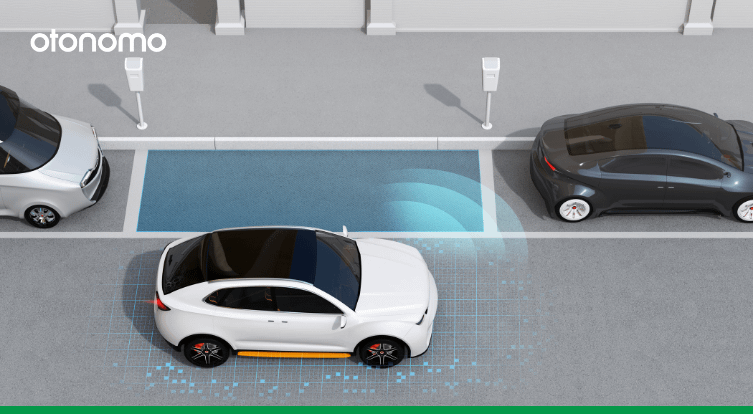Vehicles have been equipped with ultrasonic sensors for years. These sensors, part of the Advanced Driver Assistance Systems (ADAS), have been primarily used for parking guidance and blind spot detection. But with the rise of automotive IoT and advances in autonomous cars, ultrasonic vehicle data is more valuable than ever.
The market for automotive ultrasonic sensors was valued at over $3.4B in 2019, and is expected to grow to over $6B by 2030. This growth will coincide with the value that ultrasonic data provides for advances in urban parking solutions, autonomous vehicles, and V2X technology. Innovators in these areas are already using ultrasonic sensor data from connected vehicles to analyze trends, gather insights, and power their applications.

What is ultrasonic sensor vehicle data?
Ultrasonic sensors mimic echolocation used by bats, transmitting high-frequency sound waves to gauge the distance between objects within close range.
Ultrasonic sensors can be used to complement other vehicle sensors, including radar, cameras, and lidar, to get a full picture of the immediate surroundings of a vehicle. While ultrasonic sensors necessitate close proximity and slow speeds, advantages include the ability to be accurately used in situations with low visibility, such as in inclement weather conditions and dim areas.

Uses of Ultrasonic Data
| 3 Uses for Ultrasonic Data | |
Urban Parking Solutions |
Parking applications rely upon ultrasonic sensor data to detect open parking spots |
Autonomous Vehicles |
AVs use ultrasonic sensor data to detect conditions around the vehicle. |
V2X |
V2X devices use ultrasonic sensor data to sense vehicle location in relation to devices and pedestrians and to communicate road hazard warnings. |
While ultrasonic sensors have been helping drivers safely park for years, the data they are generating is just being harnessed. This data, crowdsourced from millions of vehicles, is a key parameter enabling the automotive IoT.
Urban Parking Solutions
Aggregate data from connected vehicles is being used by parking apps, and a critical component of that data is ultrasonic data. Sensors, already standard in connected cars, eliminate the need for expensive infrastructure often used to determine parking availability. Ultrasonic sensors in connected vehicles identify open parking spots in their immediate vicinity. This parking data is aggregated with millions of cars to create a cohesive and accurate picture of parking availability. Mobile parking applications use this data, along with other parameters from connected cars, such as location data, to guide drivers to the nearest open parking spot.

Autonomous Vehicles
Autonomous Vehicle (AV) technology relies on several sensors, including ultrasonic sensors. While ultrasonic sensors within the car can detect conditions in its vicinity, the technology on which autonomous vehicles rely requires big data to work. Utilizing ultrasonic sensor data from millions of connected vehicles is necessary to build AV algorithms. Crowdsourced ultrasonic vehicle data offers benchmarking for a variety of conditions, locations, and scenarios, when used alongside with other parameters, such as weather and hazard data.
V2X
V2X technology benefits from ultrasonic sensor data by allowing vehicles to sense and communicate road hazard warnings. Ultrasonic sensors can determine whether a vehicle is too close to another vehicle (V2V) or a pedestrian (V2P), especially in instances of low visibility. Aggregate data from ultrasonic sensors in connected cars can be used to derive insights to improve V2X technology and further road safety.

Do you have a parking, AV or V2X application that requires ultrasonic sensor data?
Download our Parking Datasheet to see ultrasonic sensor data in action.






